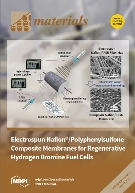In prosthetic dentistry, double crown systems have proved their suitability as retainers for removable partial dentures. However, investigations in this context, regarding polyetheretherketone, are scarce. Therefore, the aim of this study was to test the retention force (RF) between polyetheretherketone (PEEK) primary and
[...] Read more.
In prosthetic dentistry, double crown systems have proved their suitability as retainers for removable partial dentures. However, investigations in this context, regarding polyetheretherketone, are scarce. Therefore, the aim of this study was to test the retention force (RF) between polyetheretherketone (PEEK) primary and cobalt-chromium (CoCr), zirconia (ZrO
2) and galvanic (GAL) secondary crowns with three different tapers. Primary PEEK-crowns were milled with the tapers 0°, 1°, and 2° (n = 10/taper, respectively). Afterwards, 90 secondary crowns were fabricated: (i) 30 CoCr-crowns milled from Ceramill Sintron (AmannGirrbach, Koblach, Austria) (n = 10/taper), (ii) 30 ZrO
2-crowns milled from Ceramill ZI (AmannGirrbach, Koblach, Austria) (n = 10/taper), and (iii) 30 GAL-crowns made using electroforming (n = 10/taper). RF was measured in a pull-off test (20 pull-offs/specimen) and data were analyzed using 2-/1-way Analysis of Variance (ANOVA) followed by the Tukey-Honestly Significant Difference (HSD) post hoc test and linear regression analyses (
p < 0.05). The measured mean RF values ranged between 9.6 and 38.2 N. With regard to the 0°, 1°, and 2° tapered crowns, no statistically significant differences between CoCr and ZrO
2 were observed (
p > 0.141). At 0° taper, no differences in retention forces between GAL, CrCr, and ZrO
2 crowns were found (
p = 0.075). However, at 1° and 2° taper, lower RF for GAL-crowns were observed (
p < 0.009,
p < 0.001, respectively). According to this laboratory study, PEEK might be a suitable material for primary crowns, regardless of the taper and the material of secondary crown. Long-term results, however, are still necessary.
Full article






